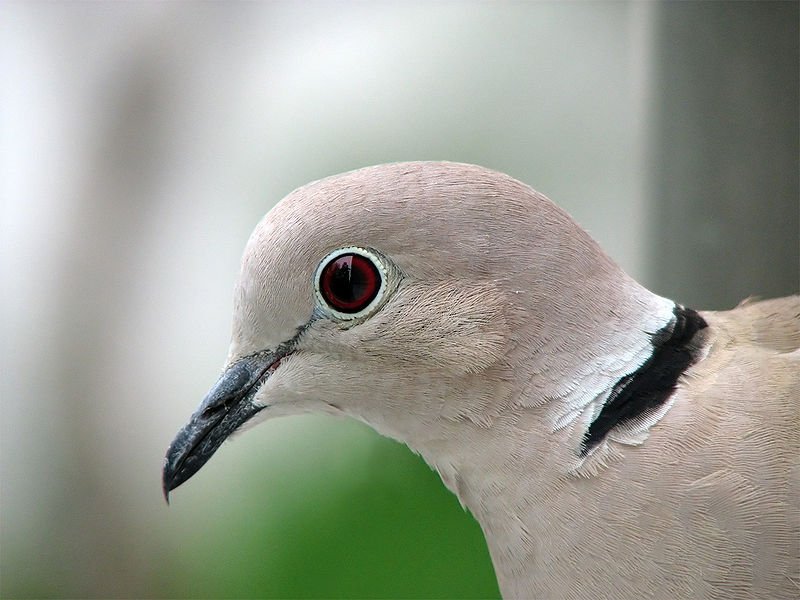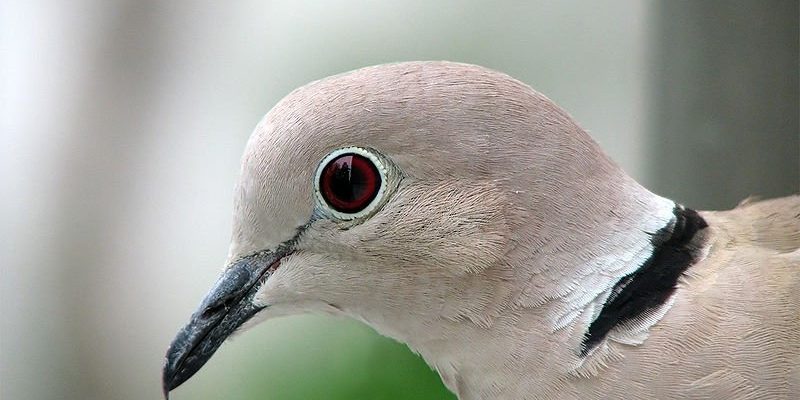
Understanding the Eurasian Collared Dove
Let’s start with the basics. The Eurasian Collared Dove (Streptopelia decaocto) is a medium-sized dove that hails from Europe and Asia but has made a comfortable home across North America. It’s important to know a bit about their physical characteristics and behaviors to help you identify them more easily. They’re about 12-14 inches long and have a graceful, slender body. Their color is a soft grayish-brown, which can blend in with many natural backdrops, so keep your eyes peeled!
One of the most distinguishing features is the black “collar” on the back of their neck, which is where they get their name. It might not be a luxury brand, but it certainly adds character! Their tail is long and pointed, giving them a sleek appearance when they fly. Now, you might be wondering what else sets them apart. Let’s explore their sounds and behavior.
Distinctive Sounds of the Eurasian Collared Dove
If you want to identify a Eurasian Collared Dove, listen closely! Their call is one of their most striking features. They have a soft, cooing sound that often resembles a gentle “coo-COO-coo.” This call is usually repeated, making it quite easy to recognize once you’ve heard it a few times. Imagine it like the gentle chime of a distant bell—it’s soothing and distinct.
During the mating season, their calls become more frequent, usually starting in spring. So, if you’re out and about in your neighborhood and hear that relaxing cooing, take a moment to look up. You might just spot one perched on a tree branch, basking in the sun or courting its mate. Their vocalizations are not just pretty sounds; they play a crucial role in their mating rituals, allowing them to communicate with each other effectively.
Coloration and Size: Key Identification Tips
Now, let’s talk about their appearance in a bit more detail. As I mentioned earlier, Eurasian Collared Doves are mostly grayish-brown, but their coloring can vary slightly depending on the light, background, and even the season. Pay close attention to their wings; they feature a subtle, lighter coloration that can be quite noticeable, especially when they’re in flight.
Another notable aspect is their size. They’re larger than typical city pigeons, which can sometimes confuse beginners. If you see a dove that seems to have a more elegant and elongated body compared to a pigeon, it’s likely a Eurasian Collared Dove. Remember, comparing them side by side can really help you grasp their size difference. It’s like comparing a gentle sedan to a compact car. Both serve their purpose, but their dimensions tell you a lot!
Habitat: Where You’ll Find Them
Eurasian Collared Doves are quite adaptable, which is why they’ve flourished in various environments. You’ll often find them in urban areas, parks, and gardens where food is accessible. They thrive in places where there are trees or shrubbery to roost and nest. So next time you take a stroll in your neighborhood or a local park, keep an eye on trees and power lines. They love to perch up high, soaking in the sun and surveying their surroundings.
They are also fond of open spaces where they can forage for seeds and fruits. So, if you’re walking near a community garden or a farm, take a moment to pause. You might catch a glimpse of them scouring the ground for a tasty snack. Spotting them in the wild adds a delightful layer to your outdoor adventures.
Behavior: Social Dynamics of Eurasian Collared Doves
You might be curious about how these doves interact with one another. Eurasian Collared Doves are relatively social birds and can often be seen hanging out in pairs or small groups. Their social nature makes them quite approachable. If you sit quietly in a park, they might even come closer to you, curious about your presence.
They usually engage in gentle vocalizations and courtship displays, such as bowing and puffing up their feathers. It’s almost like watching a little performance! Pay attention to their interactions; you’ll see them grooming each other, which is a sign of affection and bonded relationships. Witnessing this behavior can be heartwarming and gives you insight into their lives beyond just being a pretty bird.
Common Mistakes When Identifying Eurasian Collared Doves
Even seasoned birdwatchers can mix up the Eurasian Collared Dove with similar species. One common mistake is confusing them with the Mourning Dove, which is a bit smaller and has more delicate features. The Mourning Dove lacks the distinctive black collar and has longer, pointed tails. So, if you come across a dove that looks slightly smaller and doesn’t have that eye-catching collar, it’s likely a Mourning Dove.
Another error is the assumption that all doves are created equal. While many doves share similar traits, the Eurasian Collared Dove has a unique combination of size, coloration, and call that makes it stand out. Remember, being patient and observing their particular behaviors can help you make a correct identification.
When you’re out in nature, spotting the Eurasian Collared Dove can feel like discovering a secret. They may not be the flashiest bird, but their gentle demeanor and beautiful simplicity make them a joy to observe. Use your ears first to listen for their distinct cooing, then let your eyes do the searching. With a little patience and practice, you’ll become quite skilled at identifying these lovely doves in the wild.
So, next time you find yourself in a park or your backyard, take a moment to stop and listen. You might just find a Eurasian Collared Dove resting, cooing, or gracefully gliding overhead. The world around us is filled with small wonders, and sometimes, it’s the simplest ones that bring us the most joy. Happy birdwatching!

